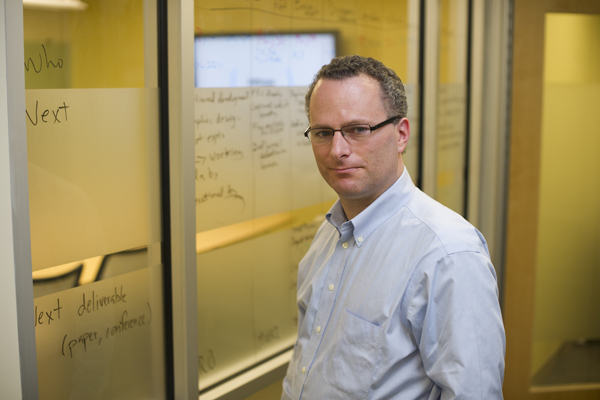R U OK?: How mobile phone data can improve emergency response

“Are you okay?”
Words like these appeared on the screens of millions of Boston residents’ and visitors’ mobile phones on April 15, the day two bombs exploded near the Boston Marathon finish line. The attacks set off a cascade of social interactions: parents called children, employees texted bosses, husbands called wives. Some called to make sure their loved ones were safe; others called for emergency help, supplies, information.
Each of these interactions is now stamped with a time and a location and stored in the call logs of the phones themselves. Professor David Lazer and his team of network scientists want to use these data to better understand how we use our social networks during times of crisis.
The group has developed an app for Android phones users to help them do exactly that. “The central idea is to see with whom people communicated during the day of the bombing, and how that compared to their regular communication, to find out whether people were able to get the information and resources and emotional support they needed,” said Lazer, who holds joint appointments in the Department of Political Science and the College of Computer and Information Science.
Available on the Google Play store, the app will first ask participants a series of multiple choice questions: Are you single? Do you have children? Are your parents living? It will want to know how you learned about the bombings and when. It will want to know who you were with when you heard the news.
It will then “reach into the phone’s call logs,” as Lazer put it, to identify the most frequently contacted people in the hours after the bombs went off. It will ask questions about eight of them: how are you connected to this person? Why did you reach out them? Did you get what you needed? For each completed survey, the researchers plan to donate three dollars to the One Fund Boston, a fund aimed to help those most affected by the attacks.
Network scientists have already done quite a bit of research on mobile phone logs, Lazer said. While this information can reveal interesting patterns—for instance, in periods following an emergency, the number of calls between people 20 years apart increases—but they can’t provide many conclusions. Common sense would say that those 20-year separations indicate parent-child interactions. “But you can’t just assert things in science,” said Lazer.
He hopes the app will add important contextual information to the raw data researchers are already investigating. The effort could afford a better understanding of how information diffuses through society and thereby enable better emergency response strategies in the future.
Additionally, with enough data like this and the lab’s previous app surrounding Hurricane Sandy, they hope we’ll one day be able to use our social interaction patterns on devices and media to detect and possibly even predict emergency situations.





